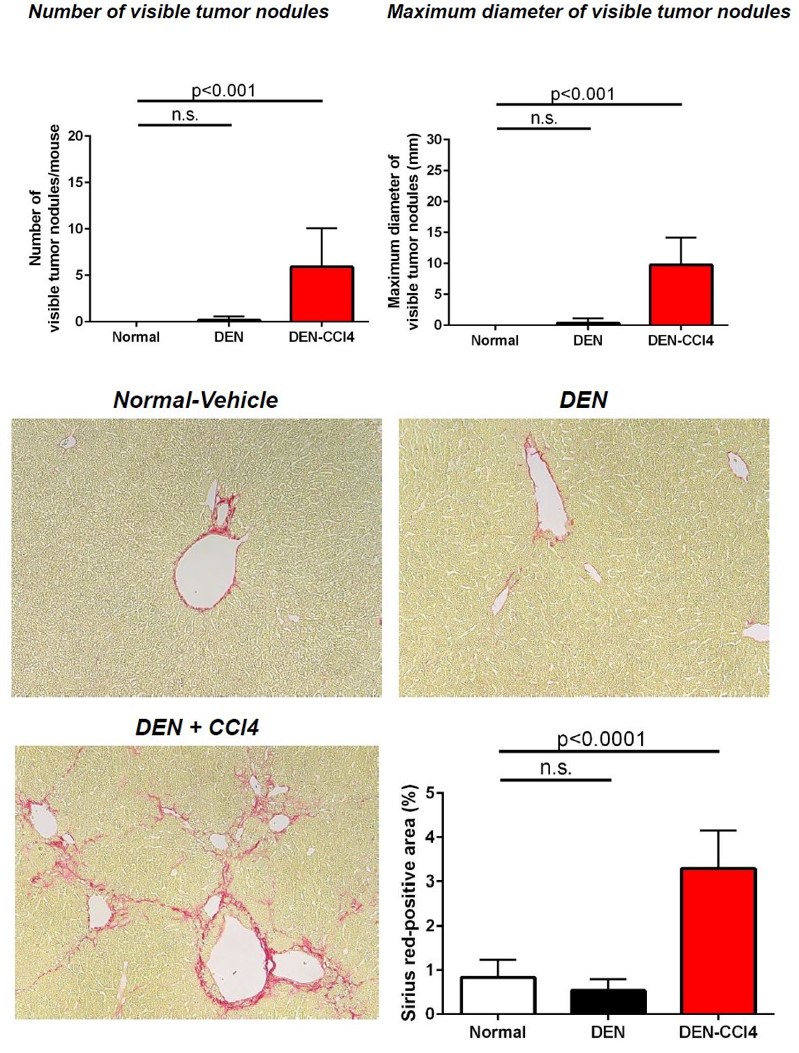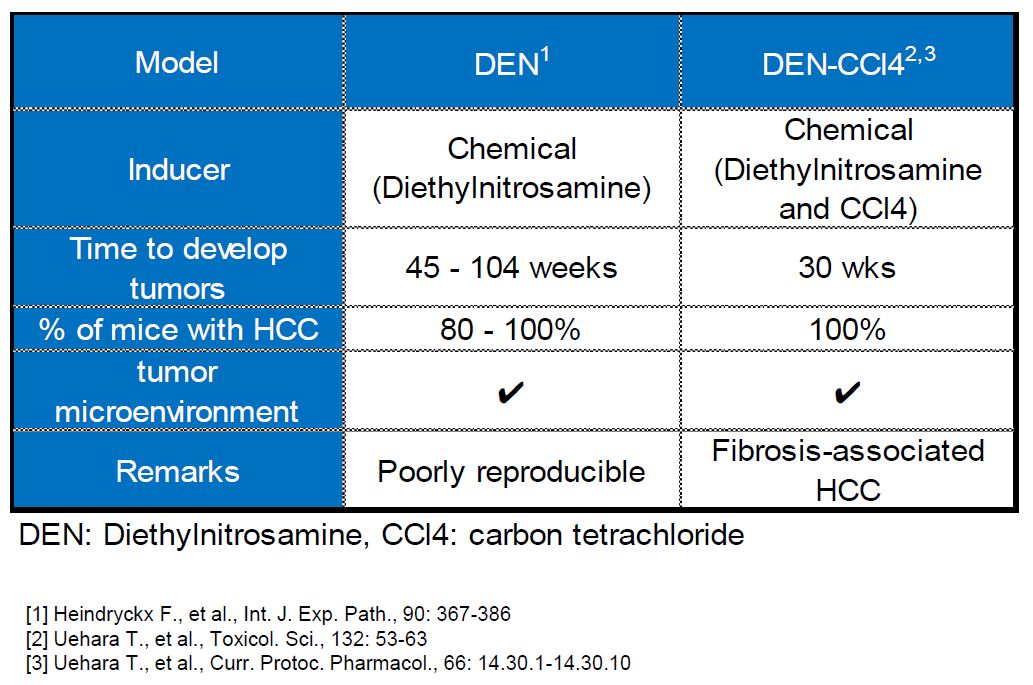Introduction to the hepatocellular carcinoma model (DEN-CCl4 model)
We would like to introduce the DEN-CCl4 mouse model for hepatocellular carcinoma (HCC).
We focus on key pathophysiological events of human cirrhosis-associated hepatocarcinogenesis and have selected the DEN-CCl4 mouse model where chronic liver fibrosis leads to dramatic potentiation of the liver tumor incidence, with 100% of mice developing liver tumors at 30 weeks of age.
This model can be employed for studying the molecular mechanisms of fibrogenesis and HCC development, and in cancer chemotherapy testing of drug candidates.

Major endpoints include tumor number and size, and liver histology (Sirius-red staining for fibrosis).
The data for the DEN-CCl4 model is shown below.
In addition, the comparison table for the DEN model and the DEN-CCl4 model is shown below.

As mentioned above, the DEN-CCl4 model is a model that can be used to induce disease in a short period of time with good reproducibility compared to the DEN model.
Unlike the STAMTM model, this model does not have a background of type 2 diabetes, so if you are targeting those liver cancer, this model is recommended.
We can also propose the optimal study design through consultation with our specialist team, so please contact us.
